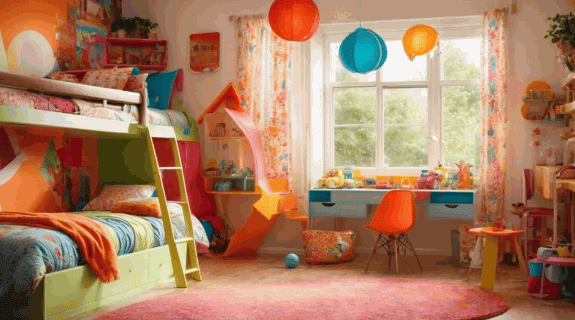
Designing a child's bedroom can be an enjoyable and fulfilling project, but it also presents its own challenges. Consider the child's age and gender, create a space that is both functional and enjoyable, and take into consideration various factors.
In this article, we will explore tips and ideas for designing, maintaining, and budget-friendly options for children's bedrooms. Whether you are updating your child's current room or starting from scratch, we have you covered.
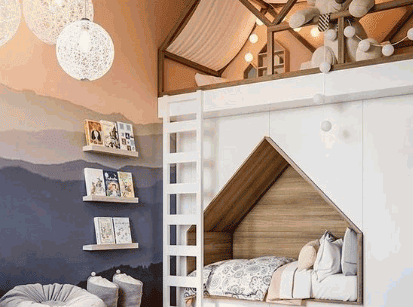
Designing A Kid's Bedroom
Table of Contents
Designing a child's bedroom involves creating a space that is not only visually appealing but also functional and safe for children. It is essential to consider elements such as decor, furniture, themes, colors, and storage options to cater to the needs and preferences of young individuals.
Incorporating creative and playful elements into the design can elevate the ambiance of the room while stimulating a child's imagination. Functional furniture like bunk beds with built-in drawers or desks with ample storage compartments not only optimizes space but also encourages organization.
Using vibrant colors and playful themes adds a sense of fun and energy to the room, making it a place where kids love to spend time. Safety measures such as soft edges on furniture, non-toxic materials, and secure fixtures are crucial considerations for creating a child-friendly environment.
Learn more: Best Bedroom Accessories
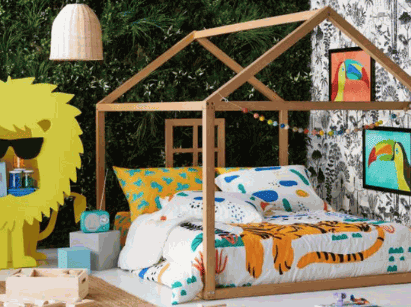
Age And Gender Considerations
When designing a child's bedroom, it is crucial to consider the child's age and gender to create a personalized space that resonates with their interests and personality. Incorporating gender-neutral colors and themes can provide a versatile and inclusive environment for children of all backgrounds.
Age-appropriate decor plays a significant role in fostering a child's imagination and sense of comfort within their designated space. By incorporating elements that align with the child's developmental stage, such as playful motifs for younger children or more subtle designs for older children, you can create a room that grows with them.
Personalization is another key aspect, allowing children to express their individuality through custom art pieces, personalized bedding, and unique decorations that reflect their hobbies and preferences. This personal touch not only makes the room feel special but also fosters a sense of ownership and belonging for the child.
Theme And Colour Scheme
Choosing a theme and color scheme for a kid's bedroom is a creative process that can set the tone for the entire room. From vibrant and playful colors to soothing pastels or neutral tones, the choice of themes and colors can influence the atmosphere and mood of the space.
These elements play a vital role in creating a visually appealing and harmonious environment that resonates with the child's preferences and the overall design aesthetic. Incorporating themes like space, jungle, or princess can spark imagination and creativity, while colors such as sky blue, sunshine yellow, or soft pink can evoke feelings of joy and comfort. By integrating creative and playful elements like wall stickers, themed bedding, and whimsical decor, you can transform a child's room into a personalized sanctuary that reflects their personality and interests.
Furniture And Storage Options
Selecting the right furniture and storage solutions for a child's bedroom is crucial for optimizing space and functionality. Incorporating beds with built-in storage, versatile shelves, and multifunctional pieces can help create a well-organized and efficient room layout that meets the child's needs.
By choosing functional furniture like bunk beds that have storage drawers underneath, you not only provide a comfortable sleeping space but also utilize the area efficiently.
Having shelves that can double up as both book storage and display units helps in decluttering the room.
Opting for desks that come with hidden compartments or extendable surfaces ensures a designated study area without compromising on play space. The benefits of these multifunctional pieces extend beyond aesthetics, as they promote a sense of independence and organization in children.
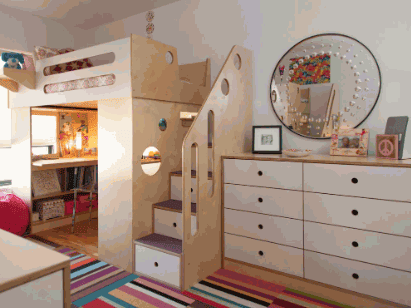
Safety Measures
Ensuring safety in a child's bedroom is paramount when designing the space. Implementing safety measures such as secure furniture anchoring, child-proofing accessories, and organizing items within reach can create a secure environment for children to play, learn, and rest comfortably.
In addition to safety precautions, DIY projects offer an opportunity to infuse creativity and personalized touches into the room while maintaining functionality.
Incorporating educational elements, like a chalkboard wall for drawing or a reading nook with child-friendly books, can both engage and stimulate a child's learning.
Organizational hacks, such as labeled storage bins and wardrobe dividers, not only enhance the room's tidiness but also teach children about keeping their space neat.
Striking a balance between safety, organization, and educational design ensures a bedroom that nurtures both a child’s curiosity and well-being.
Creating A Functional And Fun Space
Creating a functional and fun space in a child's bedroom involves incorporating play areas, study spaces, and personalized elements that foster growth, creativity, and imagination. From Montessori-inspired designs to Scandinavian, Bohemian, or themed environments like Nautical or Safari, the room can become a hub for exploration and learning.
By seamlessly blending these elements, parents can create a diverse and stimulating environment that encourages both play and focused study. Opting for a Montessori style can introduce child-sized furniture and accessible shelving units, promoting independence and organization. Scandinavian themes often emphasize clean lines, neutral colors, and natural materials to evoke a sense of calm conducive to learning. On the other hand, Bohemian designs might incorporate eclectic patterns and vibrant hues, sparking creativity and self-expression in children.
Play And Study Areas
Designating separate play and study areas in a child's bedroom can create a balanced environment that supports both recreational activities and learning experiences. Incorporating cozy reading nooks, functional desks, chairs, and organized spaces can enhance the room's versatility and educational value.
Having distinct play and study zones helps children establish a clear mental separation between leisure and focused tasks, fostering better concentration and creativity. By providing a dedicated space for play, kids can freely engage in imaginative activities without distractions. On the other hand, a well-equipped study corner equipped with personalized organization systems encourages a sense of ownership over one's learning environment, leading to improved academic performance and time management skills. The integration of these elements promotes a holistic approach to child development within the confines of their bedroom.
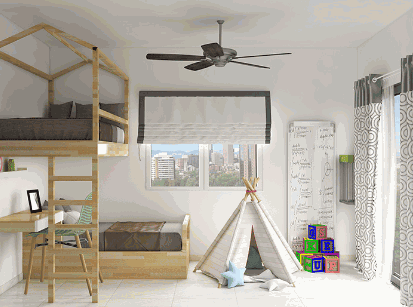
Personalisation And Organisation
Personalization and organization are key aspects of designing a child's bedroom that reflect the child's individuality and support their independence and imagination. Utilizing shelves, toy storage solutions, bookshelves, and artwork can not only enhance the room's aesthetics but also encourage creativity and organization.
Shelves are fantastic for displaying toys and books, making them easily accessible while maintaining a clutter-free environment. Toy storage solutions offer a practical way to keep toys organized and facilitate clean-up routines, teaching children valuable tidiness skills.
Bookshelves provide a designated space for reading materials, fostering a love for books and encouraging independent reading habits. Incorporating artistic elements such as wall decals or a mini art gallery can spark a child's imagination and allow them to express themselves creatively within their personal sanctuary.
Incorporating Fun Elements
Infusing fun elements into a child's bedroom can elevate the space from ordinary to extraordinary, stimulating creativity and imagination. From colorful artwork and vibrant wallpapers to playful lamps, wall decorations, and patterned textiles, the room can become a whimsical and dynamic environment for children to thrive.
By incorporating imaginative pieces such as whimsical wall stickers and interactive furniture, the room transforms into a magical sanctuary where adventure and play intertwine seamlessly. Splashes of bold colors and quirky shapes further enhance the energetic vibe, encouraging young minds to explore and dream without limits. With personalized touches like custom-made storage units and themed bed linens, every corner exudes joy and wonder, turning the mundane into a vibrant canvas ready to ignite boundless imaginations.
Budget-Friendly Ideas For Kids Bedrooms
Implementing budget-friendly ideas in designing a kid's bedroom can be both practical and creative, allowing for cost-effective solutions that do not compromise style or functionality. From engaging in DIY projects and upcycling furniture to utilizing multipurpose items that maximize space and impact, the room can reflect modern or traditional aesthetics within a reasonable budget.
By repurposing old furniture with a fresh coat of paint or creative embellishments, you can add unique charm to the room whilst saving money.
Incorporating DIY elements like handcrafted wall art or customized shelving can infuse personal touches and enhance the room's appeal without breaking the bank.
Strategically selecting multipurpose items such as bunk beds with built-in storage or convertible desks can optimize space and functionality, making the most out of every square foot in a fun and inventive manner.
DIY Decorations
Engaging in do-it-yourself (DIY) decorations for a child's bedroom can add a personal touch and creative flair to the space. From crafting custom wall art to customizing accessories, DIY projects can transform the room into a unique and personalized environment tailored to the child's interests and preferences.
By involving the child in the creative process, DIY projects not only enhance the aesthetics of the room but also foster a sense of ownership and pride.
Personalized decor items like hand-painted shelves or DIY photo collages can showcase the child's favorite colors, themes, or hobbies. Customizing accessories such as lampshades or cushion covers with their name or favorite patterns can make the room feel special and truly theirs.
The beauty of DIY decorations lies in their ability to capture the essence of the child's imagination and translate it into tangible elements within the bedroom.
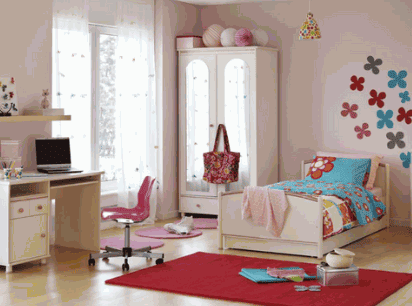
Upcycling Furniture
Upcycling furniture for a child's bedroom presents an eco-friendly and creative approach to design that can breathe new life into existing pieces. From repainting and repurposing furniture to creating multifunctional items that are easy to clean and maintain, upcycling can offer sustainable and innovative solutions for furnishing the room.
By incorporating upcycled furniture in a child's bedroom, you not only contribute to reducing waste but also nurture a sense of uniqueness and personalization in the space. Refurbishing old dressers or chairs with a fresh coat of colorful paint or adding playful decals can transform ordinary furniture into whimsical pieces that spark joy and creativity. Repurposed items offer a budget-friendly way to update the room's décor while instilling values of sustainability and resourcefulness in the child's upbringing.
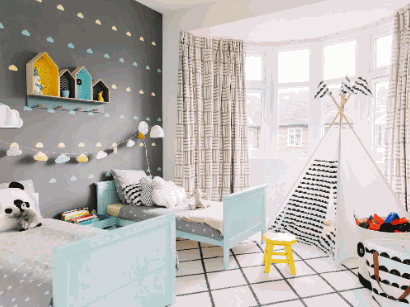
Utilizing Multipurpose Items
Incorporating multipurpose items in a child's bedroom can optimize space and functionality, offering versatile solutions for storage, bedding, and organization. From customizable beds with built-in storage to modular furniture that adapts to changing needs, multipurpose items can enhance the room's layout and adaptability for growing children.
By integrating space-saving solutions such as bunk beds with under-bed drawers or loft beds with study desks below, parents can create a functional and orderly environment that evolves with their child's development.
The ability to customize furniture pieces according to preferences and requirements allows for a personalized touch, fostering a sense of ownership and creativity in the child's living space.
Incorporating adaptable storage solutions like shelving units that can be adjusted in height or repurposed as the child grows can ensure efficient use of space while maintaining a clutter-free ambiance.
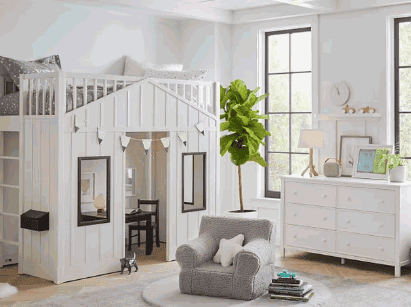
Tips For Maintaining A Kid's Bedroom
Maintaining a child's bedroom involves regular cleaning, decluttering, and organization to ensure a tidy and functional environment for children. Teaching children to keep their space organized, updating the room as they grow, and accommodating their changing needs can support a sense of responsibility, growth, and independence.
Encouraging children to participate in the upkeep of their rooms from an early age not only instills valuable life skills but also fosters a sense of pride and ownership.
By involving them in the process of decluttering and organizing, you empower them to make decisions about their belongings and develop a personal connection to their space.
Creating designated areas for different activities within the room can help streamline daily routines and enhance productivity.
As children's interests evolve, periodically revisiting the room's layout and decor can spark creativity and reflect their unique personalities.
Regular Cleaning And Decluttering
Regular cleaning and decluttering are essential tasks in maintaining a child's bedroom that promote tidiness, organization, and a healthy living environment. Engaging children in fun and educational cleaning activities can instill good habits and a sense of responsibility while optimizing space and functionality within the room.
By involving kids in the cleaning process, they not only learn valuable life skills but also develop a sense of ownership and pride in their space. Simple tasks like sorting toys into designated bins or organizing books by category can make tidying up a rewarding experience. Incorporating educational elements into cleaning, such as teaching the importance of recycling or proper waste disposal, can turn routine chores into meaningful lessons about sustainability and environmental responsibility.
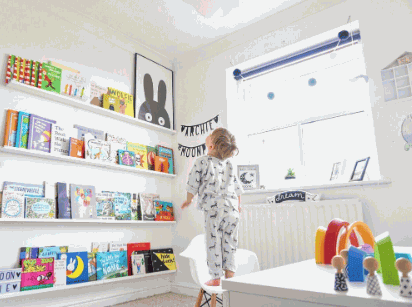
Teaching Kids To Keep Their Space Tidy
Teaching kids to keep their space tidy and organized cultivates a sense of responsibility, independence, and learning. Encouraging children to participate in maintaining their bedroom, organizing toys and belongings, and respecting their environment can foster good habits and valuable life skills for the future.
This involvement in cleaning and organizing not only teaches children to take pride in their surroundings but also instills a sense of ownership and accomplishment. By making it a fun and engaging activity, kids are more likely to develop a positive attitude towards chores and develop essential self-care skills. Through organizing tasks, children learn valuable lessons in decision-making, time management, and problem-solving, all of which are crucial for their personal growth and development.
Updating As They Grow
Updating a child's bedroom as they grow is essential to adapt to their changing needs, preferences, and interests. Creating a personalized and customizable space that evolves with the child can support their growth, individuality, and self-expression throughout different stages of development.
By customizing the room according to the child's evolving tastes, parents can foster a sense of ownership and belonging, which in turn enhances the child's sense of independence and creativity.
Incorporating elements that inspire and motivate the child can also positively impact their overall mood and attitude. As children transition through various developmental phases, having a space that is tailored to their current interests can boost their confidence and provide a nurturing environment for exploration and self-discovery.